I have come to find that most winemakers struggle with operations that occur before bottling or packaging. This includes operations after malolactic fermentation is complete, while the wine is in storage, blending, stabilization, filtration, and bottling itself. Many may wonder what the “best” order is to complete various operations, or even find themselves asking how to complete a certain operation like protein stabilization.
It is during these processes that I find myself reiterating how important it is to refer to one of the best kept secrets about wine production:
Minimally moving the wine is the best thing a winemaker can do to preserve quality.“
Movement includes things like:
- Racking
- Pumping
- Mixing
- Blending
- Fining
- Filtering
- Bottling
Operations like traditional cold stabilization and heat stability are movement operations that have the potential to integrate a lot of oxygen. This rush of oxygen integration can lead to accelerated degradation of wine quality.
Traditional cold stabilization process (i.e., natural chilling or contact seeding) can be especially impactful to wine quality. While some wines may require cold stabilization to change the acid structure of the wine, many wines may not require these traditional processes. The primary issues about traditional cold stabilization processes involve racking and filtration post-cold stabilization, which causes a big ingress of oxygen (and dissolved oxygen) into the wine due to the fact the wine is moved at such low temperatures.
Wine Movement and Oxygen
When primary fermentation completes, the wine becomes saturated with dissolved carbon dioxide that is not able to escape. Every time the wine is moved, some of the dissolved carbon dioxide within the wine is released and oxygen is integrated into the wine as dissolved oxygen (DO). This exchange can be minimized by flushing hoses and receiving vessels with inert gas, like argon.
As DO concentration increases in the wine, the quality of the wine becomes more at risk for quality degradation. Dissolved oxygen contributes to chemical oxidation, the depletion of free sulfur dioxide, and the growth of microorganisms. Increased levels of DO at bottling can contribute to rapid losses of free sulfur dioxide post-bottling. Often, these wines will not retain quality in the bottle for very long or may be subject to post-bottling fermentation risks due to drops in free sulfur dioxide concentration.
While I encourage winemakers to measure and monitor dissolved oxygen, this analysis is often seen as frivolous. When used strategically, DO analysis can be insightful. Dissolved oxygen monitoring can often pinpoint production steps that are harmful to wine quality by identifying those steps that integrate a lot of oxygen.
Alternatively, winemakers can make large quality improvements first by better planning and managing wine movements before the investment of a DO meter. The process of planning pre-bottling operations is where I spend the most time with my clients because it is the easiest place to start improving wine quality. Also, as I alluded to above, it is often where a lot of winemaking misconceptions lie, which allows us to work together and refine processes to better serve wine quality and longevity.
Pre-Bottling Logistics
By the time many of my clients bottle their first wines with me, they often comment on how flavorful and fresh the wines are compared to previous vintages. This is because we work together, reviewing their typical practices, and I make suggestions to alter the way they are doing a specific process to try to improve the quality of their wine, Or, I provide them with a renewed order of processes that I know will better serve wine quality.
It’s possible you may not have known these operations can be re-arranged or more specific to the wine you are crafting.
This is why I developed the Pre-Bottling Timelines and Checklists, available within the Cellar Tools, for DG Winemaking community members and clients to use and follow.
This tool was developed to address the needs of winemakers, providing a standard outline of guidance for what production operation to complete, when to do it, and how to accomplish that step with success. Each step can be seen in the appropriate order with an expected timeline with how long it may take before the wine can be bottled.
These pre-bottling checklists are available for White, Red, and Formula wines! And one pre-bottling checklist specific for Rosé wines has been freshly released!
How can you access the pre-bottling timelines?
DGW Insiders have access to these tools. Additionally, DGW Elite members receive access to these tools with supplemental Q&A sessions with Denise each month.
Time is of the essence.
The first round of DGW Elite membership invitations is closing this month! And now is the perfect time to start refining your pre-bottling practices for immediate changes in wine quality before harvest season begins.
